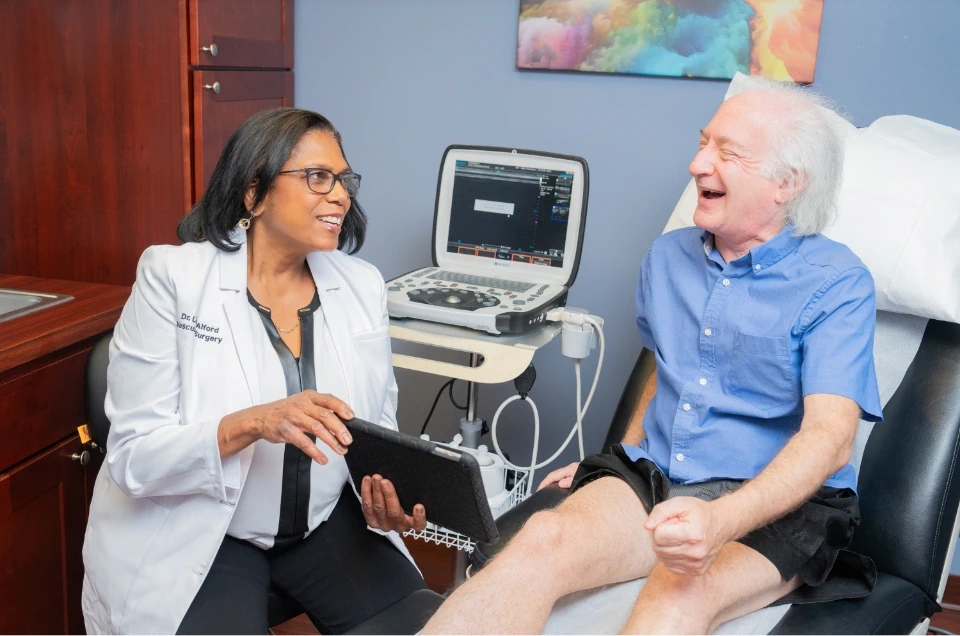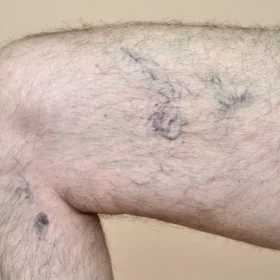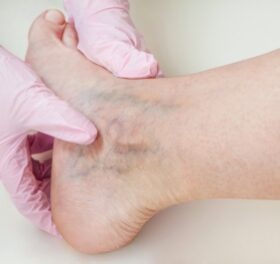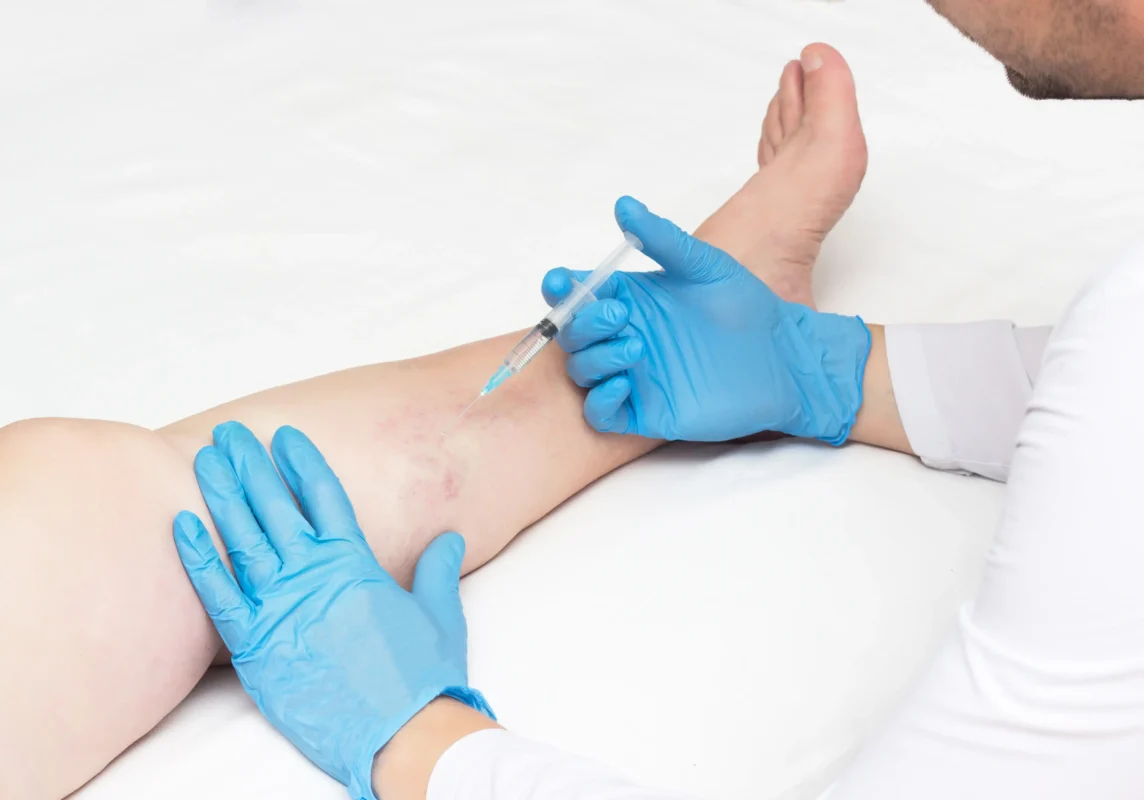Minimally invasive vein treatments have revolutionized the management of venous disorders, providing patients with effective solutions that are less invasive, offer quicker recovery times, and produce excellent results. If you’re considering undergoing such a procedure, it’s crucial to understand what to expect during and after the treatment process. From the initial consultation to post-treatment care, here’s a guide to help you prepare for your vein treatment.
At Vein Treatment Clinic, we offer personalized, minimally invasive spider vein and varicose vein treatments to help you achieve and maintain healthy legs. Our vein clinics are led by board-certified vein doctors specializing in cutting-edge minimally invasive vein treatments. We support you through every stage of your vein care journey, ensuring safe results. You can find our vein centers in New York, New Jersey, California, and Maryland — please schedule an appointment at your nearest vein clinic today.
Initial Consultation
The process begins with an initial consultation with our board-certified vein doctors. During this appointment, the vein doctor will review your medical history, discuss your symptoms, and conduct a physical examination to assess the extent of your venous condition. Be prepared to provide details about any previous vein treatments or surgeries you may have undergone.
Expectations:
- Comprehensive Assessment: The initial consultation involves a comprehensive assessment of your venous health. The vein specialist will inquire about your symptoms, medical history, and any previous treatments you’ve received for vein-related issues. This assessment may also include a physical examination to evaluate the condition of your veins.
- Diagnostic Testing: To accurately diagnose your venous condition, the physician may order diagnostic tests such as duplex ultrasound. This non-invasive imaging technique allows the specialist to visualize the structure and function of your veins, helping to identify any abnormalities or underlying issues.
- Discussion of Treatment Options: Based on the assessment, the vein doctor will discuss suitable treatment options tailored to your specific condition. These options may include endovenous laser ablation (EVLA), sclerotherapy, or ambulatory phlebectomy. Your vein specialist will explain the benefits, risks, and expected outcomes of each treatment.
- Opportunity to Ask Questions: The initial consultation provides an opportunity for you to ask questions and express any concerns you may have about the procedure, recovery process, or potential risks. Feel free to discuss your expectations, treatment preferences, and any lifestyle factors that may impact your decision.
Preparing for the Procedure
Once you and your vein doctor have decided on the most appropriate treatment plan, you’ll receive instructions on how to prepare for the procedure. Depending on the type of minimally invasive treatment you’re undergoing, the preparation may vary slightly.
Expectations:
- Preparation Guidelines: Before the procedure, you’ll receive specific instructions from your vein doctor on how to prepare. This may include avoiding certain medications, such as blood thinners, for a specified period before the procedure to minimize the risk of bleeding. Your specialist will provide detailed guidelines tailored to your individual needs.
- Fasting Instructions: In some cases, you may need to fast for a few hours before the procedure, especially if it involves sedation or anesthesia. Your vein doctor will inform you about any fasting requirements and advise you on when to stop eating and drinking.
- Arrange Transportation: Since you may not be able to drive yourself home after the procedure, it’s essential to arrange for transportation in advance. Consider asking a friend or family member to accompany you to the appointment and drive you back home afterward. Alternatively, you can arrange for a taxi or rideshare service to ensure a safe journey.
During the Procedure
Minimally invasive vein treatments are typically performed on an outpatient basis and require only local anesthesia. The procedure itself is relatively quick and usually completed within an hour or less, depending on the complexity of the case.
Expectations:
- Pre-procedural Preparation: Before the procedure begins, the medical team will ensure that you’re comfortable and adequately prepared. You’ll be positioned on the procedure table, and the treatment area will be cleaned and sterilized to reduce the risk of infection.
- Administration of Anesthesia: Local anesthesia will be administered to numb the treatment area and minimize discomfort during the procedure. In some cases, mild sedation may also be provided to help you relax, but you’ll remain awake and aware throughout the process.
- Minimally Invasive Techniques: The procedure will be performed using minimally invasive techniques, such as ultrasound-guided procedures or endoscopic visualization. These techniques allow the vein physician to access and treat the affected veins with precision while minimizing trauma to surrounding tissues.
- Real-time Monitoring: Advanced imaging technologies, such as ultrasound guidance, may be used during the procedure to ensure precise placement of the treatment device and optimal outcomes. This real-time monitoring allows the specialist to visualize the treatment area and make adjustments as needed to achieve the desired results.
- Patient Comfort: Throughout the procedure, the medical team will prioritize your comfort and well-being. You’ll have the opportunity to communicate with the specialist and the nursing staff, and they’ll be available to address any concerns or questions you may have.
Immediate Post-treatment Period
Following the minimally invasive vein treatment, you’ll be monitored for a brief period before being discharged to return home. It’s essential to follow post-procedure instructions provided by your vein doctor to promote optimal healing and reduce the risk of complications.
Expectations:
- Application of Compression: Depending on the type of vein treatment you’ve undergone, you may be instructed to wear compression stockings or bandages to promote circulation and minimize swelling. Compression garments help support the treated veins and reduce the risk of blood clots forming in the legs.
- Activity Restrictions: While you can usually resume light activities immediately after the procedure, you may be advised to avoid strenuous exercise or heavy lifting for a certain period. Your vein specialist will provide specific guidelines based on your individual case and the type of treatment you’ve received.
- Pain Management: Some mild discomfort or soreness in the treated area is normal after the procedure. Your vein physician may prescribe pain medication or recommend over-the-counter pain relievers to help manage any discomfort during the initial recovery period.
- Follow-up Instructions: Before you leave the medical facility, your vein physician will provide detailed instructions for post-procedure care and follow-up appointments. Be sure to follow these instructions carefully to ensure a smooth recovery and optimal treatment outcomes.
Long-term Recovery and Results
The recovery period following minimally invasive vein treatments is typically shorter and more comfortable compared to traditional surgery. Most patients can return to their normal activities within a few days, with noticeable improvements in their venous symptoms.
Expectations:
- Gradual Improvement: While you may experience some immediate relief from symptoms such as pain, swelling, and discomfort, it may take several weeks to months to see the full benefits of the treatment. As the treated veins gradually shrink and disappear, you’ll notice improvements in the appearance and function of your legs.
- Monitoring of Results: Your physician will closely monitor your progress during follow-up appointments and may recommend additional treatments or interventions if necessary. Follow-up visits allow the vein specialist to assess the effectiveness of the treatment and address any concerns or complications that may arise.
- Lifestyle Modifications: To maintain the results of the treatment and prevent the recurrence of venous issues, you may be advised to make lifestyle modifications such as regular exercise, maintaining a healthy weight, and wearing compression garments as needed. These lifestyle changes can help support healthy circulation and reduce the risk of developing new varicose or spider veins in the future.
Consult Us for Minimally Invasive Vein Treatments
Minimally invasive vein treatments offer a safe, effective, and minimally disruptive solution for individuals suffering from venous disorders. At Vein Treatment Clinic, we’re committed to providing our patients with the highest quality care in a comfortable and supportive environment. From your initial consultation to post-treatment follow-up, we’ll be with you every step of the way, ensuring a smooth and successful treatment.
Remember to communicate openly with your vein doctor, follow post-procedure instructions diligently, and prioritize your recovery to enjoy long-term relief from venous symptoms. With proper care and attention, you can look forward to healthier, more comfortable legs. Please schedule an appointment at your nearest vein clinic to initiate your vein care process.











